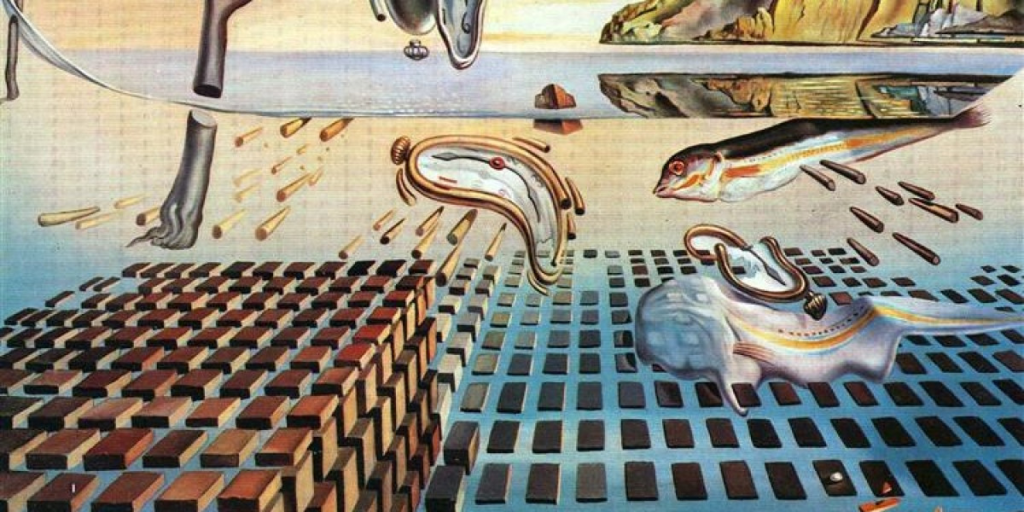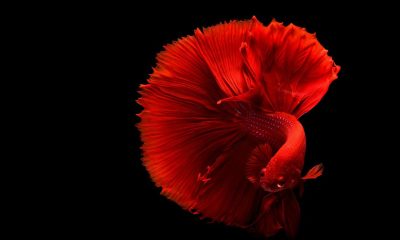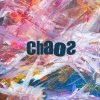Entertainment
What Does A Chaos Mean In Art?
Chaos Theory:
Chaos theory is a complex concept that recognizes to analyze the points. In chaos theory regularity and predictability become unpredictable and form turns into formlessness. Chaos mean in art is a theory focuses on the unpredictable nature of systems. It can vary wildly from moment to moment and can be difficult to comprehend. Euclidean geometry is replaced by the seemingly random and unpredictable elements of chaos. Chaos theory is a powerful tool for understanding the chaotic nature of many systems. It includes from the weather to financial markets. It can be used to investigate complex behavior resulting from the interactions of nonlinear elements. By studying chaos theory, we can gain insights into the patterns and relationships that emerge from chaotic conditions.
Analysis Of Chaos Theory:
The acceptance of chaos theory has been a major contributor in deepening traditional science’s understanding of established theories and breakthroughs. Chaotic movements of Impressionism, Cubism, Abstract Art, and other modern art forms have enriched the entire field of art history. Moreover, these artistic movements have forced a reconsideration of the accepted standards of beauty and aesthetic theory. It is no longer enough to simply classify art as either “good” or “bad.” Modern art has opened the door to explore entirely new interpretations of art and beauty. Furthermore, chaos theory has also provided insight into the realm of mathematics. It illuminating the beauty and power beneath the seeming randomness of many complex equations.

Chaos Art:
The late 19th and early 20th century saw a groundbreaking shift in the way art was viewed and practiced. As chaos scientists had done before them, artists began to reject traditional boundaries. The ways of analyzing problems, instead choosing to explore new avenues of creativity and expression. This disruptive approach to art challenged the accepted wisdom of the field. As artists embraced new materials and techniques, and sought to redefine what art could and should be. This period was known as the avant-garde. It significantly influenced the art world, ultimately leading in appreciation and production of art. Its legacy can still be seen today. With many modern artists rejecting the status quo and pushing boundaries in their own unique ways.
Defining ART:
The definition of art has continued to be a complex and difficult subject for authors in various fields of study. The term itself is derived from the Latin ars, meaning “skill”, and while it is generally agreed upon the skill. Skill is a key factor of creating a work of art, it is far from being the only criterion that must be met. Art is a form of expression, individual brings their own interpretation and vision to the creation of a piece. There is no definitive answer to what makes something art, as what may be seen as a masterpiece to one person may be considered mundane to another. To make matters even more complex, art is constantly evolving and new styles are continually emerging.
Art Is A Level Of Skill:
Art is a form of expression which requires a certain level of skill to create a unique product. It is the combination of skill and creative imagination. It allows an artist to create a range of emotional, aesthetic, or intellectual experiences in its audience. The ultimate determination of whether a work of art is successful or not is highly subjective. What one person may find to be an exquisite work of art, another may find to be a completely uninspiring creation. Art can be seen as a form of communication, as it speaks to different people in different ways.
Chaos- Merriam-Webster Dictionary:
Chaos in the art world can take on many forms. According to the Merriam-Webster Dictionary, chaos is defined as a state of utter confusion, a confused mass, or a mixture. When it comes to art, chaos is a concept that can be explored in a variety of ways. The use of elements within a work of art in a seemingly random, chaotic, or unorganized manner. Elements used are not in balance, lack a sense of unity or they create a sense of tension and disorder. For some artists, chaos within a work of art can be used to explore a range of emotions and feelings.
Chaos- An Unconventional Practice:
Creating chaos in the arts is an unconventional practice. It involves using a variety of colors, shapes, and lines that are arranged in an unpredictable manner. The purpose of this technique is to provoke an emotional reaction from the observer. Challenging their preconceived notions about what art should look and feel like. This type of artwork often has a strong impact on the viewer’s senses, encouraging them to look at the world in a different light. By embracing the disordered nature of chaos art, an artist can evoke an intense emotional reaction that is often far stronger than what can be achieved with more traditional forms of art. Ultimately, chaos art offers the artist a unique way to express themselves and stimulate the viewer’s imagination.
How Chaos Can Be Used?
Chaos in art can be used to effectively capture a sense of confusion, disorder, or disarray. As well as to stir emotion and create a sense of energy and excitement. It can be used to represent a specific moment in time. The chaotic nature of a particular situation, or even to express the feelings and emotions of the artist. Chaos in art can be used to challenge the viewer’s perception of the world. It push the boundaries of society. An artist may use chaos to make a statement, to challenge the status quo, or to evoke a response. Chaos can be used as a tool to create an abstract art form. It explore the relationship between form and color.
What Does Chaos In Art Actually Mean?
In the art world, the concept of chaos is often seen as an unorganized state of primordial matter before any forms are created. This is a concept that is widely debated and interpreted in different ways. Some interpretations focus on the idea of chaos being a precursor to creation, while other interpretations focus on chaos being a destructive force, creating a sense of disorder and disarray. For example, Jackson Pollock’s abstract expressionist paintings often depict chaotic scenes, with a frenetic, seemingly random, use of colour and shape. On the other hand, the Dutch painter Hieronymus Bosch featured a more literal interpretation of chaos in his works, often depicting scenes of carnage and destruction.
How Can Chaos Appear In Works Of Art?
Some may call it chaos disorder, which is an accurate description of the state of things in the modern world. Every day, we are presented with countless decisions, most of which are based on the chaos that surrounds us. Although it is often a daunting prospect, it is important to remember that chaos can bring opportunities and insight that we may not have otherwise had access to. It is precisely in this chaos that we can find the answers we seek, and the courage to persevere through the fear and confusion. The next time you find yourself in a perplexing situation, take a moment to remember that the chaos is an opportunity for growth, and that there is a light at the end of the trail you have not even begun to explore yet.
When we think of chaos in art, we often associate it with themes of darkness, despair, and destruction. This may be due in part to the fact that many famous pieces depicting chaos have been inspired by conflict and suffering. For example, the famous painting ‘Guernica’ by Pablo Picasso, which portrays the anger and destruction caused by the Nazi bombing of the Basque settlement in 1937, has become a symbol of chaos in art. Yet, chaos need not always be associated with sadness and destruction. It can also be seen as a representation of the complexity of the human experience, and can be used to beautifully illustrate the many highs and lows of life. In this way, chaos in art can be seen as a powerful expression.
Why Are Things So Chaotic In Our Lives?
Chaos is often perceived as unexpected and unwanted. However, we must consider why we feel such a way when faced with a chaotic situation. Our mistakes can often be the cause of this chaos, but we must remember that mistakes are merely learning experiences. Through mistakes we gain knowledge and understanding to better ourselves and avoid making the same errors in the future. Chaos can be overwhelming and stressful, but it is important to take a step back and consider the lessons that can be learned from difficult moments. By embracing mistakes and chaos, we can grow and develop into better versions of ourselves.
The beauty of painting is that mistakes can often be seen as an opportunity rather than a flaw. By introducing a degree of motion while painting, we can create unique and mesmerizing works of art, full of imperfections that can be just as captivating as any meticulously crafted painting. Motion, be it intentional or accidental, can add a sense of liveliness to a painting, a certain vibrancy that can be difficult to achieve with more precise brush strokes. While it may seem counterintuitive to deliberately introduce imperfections in a work of art, the results can be truly stunning. Relying on traditional techniques alone can leave your painting feeling flat, but by adding a touch of chance and excitement, you can take your artwork to the next level.

Is Harmony In Art The Antithesis Of Chaos?
Many people find chaos and chaotic lifestyles incredibly intriguing and often seek out opportunities to experience them. They accept and embrace the chaos that life can bring, and many of them express their appreciation for it through creative outlets such as painting and music. Chaos often serves as an inspiration for artistic expression, as it can evoke powerful emotions and ideas. It can also offer an opportunity to explore the unknown or unfamiliar. Additionally, chaotic activities often offer the opportunity to explore a sense of freedom, as they don’t always follow a plan or structure. Ultimately, chaotic art and music can serve as a source of great joy and expression and can result in some of the most memorable and meaningful pieces of art and music.
In our lives, chaos is an ever-present force that adds an element of unpredictability and excitement to everything we do. Without it, we would be deprived of the emotions and feelings that make life so enriching and enjoyable. The way we perceive chaos in art, for example, is often reflective of the state of mind of the creator. Indeed, it is in the chaotic aspects of artwork that we are able to interpret the emotion and passion of the artist. As Albert Einstein once said, “Out of chaos comes order.” This quote is an apt description of the creative process, as chaos is often an essential element in unleashing the potential of an artist’s imagination.
What Are The Three Terms For Art?
- Art is a complex and multi-faceted concept that has been studied for centuries. Generally, it can be broken down into three main categories: form, representation, and expression.
- Form refers to the physical attributes of an artwork, such as its shape, size, and color.
- Representation is the artistic representation of reality, including everything from landscapes to portraits.
- Expression, on the other hand, is concerned with the idea of conveying an emotion or feeling in a visual way. In this sense, it is more of an abstract concept than form and representation.
All three of these categories are important for understanding and appreciating art, and each has its own nuances and complexities.
As Much Chaos As You Can In Your Artwork.
The chaos that will inevitably follow us throughout our lives can both be our greatest asset and our greatest downfall. It is ultimately up to us to decide which direction we take. Accepting the chaos and understanding our place in this world can be an important step in discovering who we truly are and living our best lives. By taking stock of the ever-changing world around us and cultivating an appreciation for the chaos, we can learn to embrace the uncertainty and discover the strength that comes with being ourselves.
Conclusion:
We’ll always revert to our safety net—what we’ve always done—if pandemonium is subdued. “We are too stable to re-organize without disruption. We are too rigid to modify and adapt. But perhaps we could find something greater if we were to harness chaos and follow the deviations from our typical paths. These trying moments could be necessary for us to fully change into the kind of people we wish to be. When you truly accept risk and move on with a relationship or life goal, you start to change and learn new things about yourself. Chaos, as used in daily speech, denotes the presence of unpredictable or chaotic behavior. The term typically has a negative connotation that suggests unpleasant disarray or confusion.
Frequently Asked Questions:
What does order and chaos mean in art?
What is chaos in design theory?
What is chaos example?




















